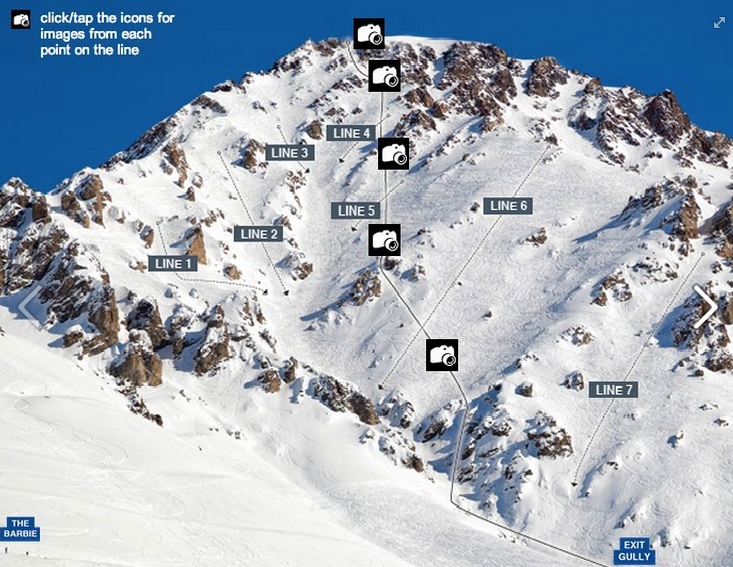How to Ski It: Reggie Crist's INTERACTIVE guide to picking a line


Find a vantage point with a wide view of the entire slope you want to ski. Experienced skiers sometimes call this spot “the barbie” (see illustration below) a term that refers to the amount of time you should spend inspecting a line—at least enough to fire up a barbecue. I can see the entire face of Eduardo’s from my barbie on the road.

Acknowledge all potential lines before choosing the best one based on your ability, your goals, and the current conditions. Make mental notes of the slope’s aspect, fall line, exposure, and objective hazards that could force you to improvise.

From the barbie, make note of physical features that will help you recognize your starting point when you get to it. Your first turns will be your most consequential, so pick an entry that will inspire confidence, not fear or doubt.

Making a mental plan of your run establishes confidence; when you know where you’re going, you’re more likely to ski fluidly and aggressively. From my scouting point, I can see a gas pipeline at the summit, and I decide I’ll start my descent just skier’s left of it. After dropping onto the slope, I’ll have to keep my momentum up so I can crest the False Summit before turning above the Divider Rock—skier’s right toward Lines 1 to 3 or skier’s left toward Lines 4 to 6.

From my scouting location, I like to guess the number of turns it will take to get from one landmark to the next. This is one of the most difficult skills to master because perceived distances can change depending on your scouting location. Terrain features such as the Slot Rock will force many tighter turns; Line 5 offers room for a few big turns.